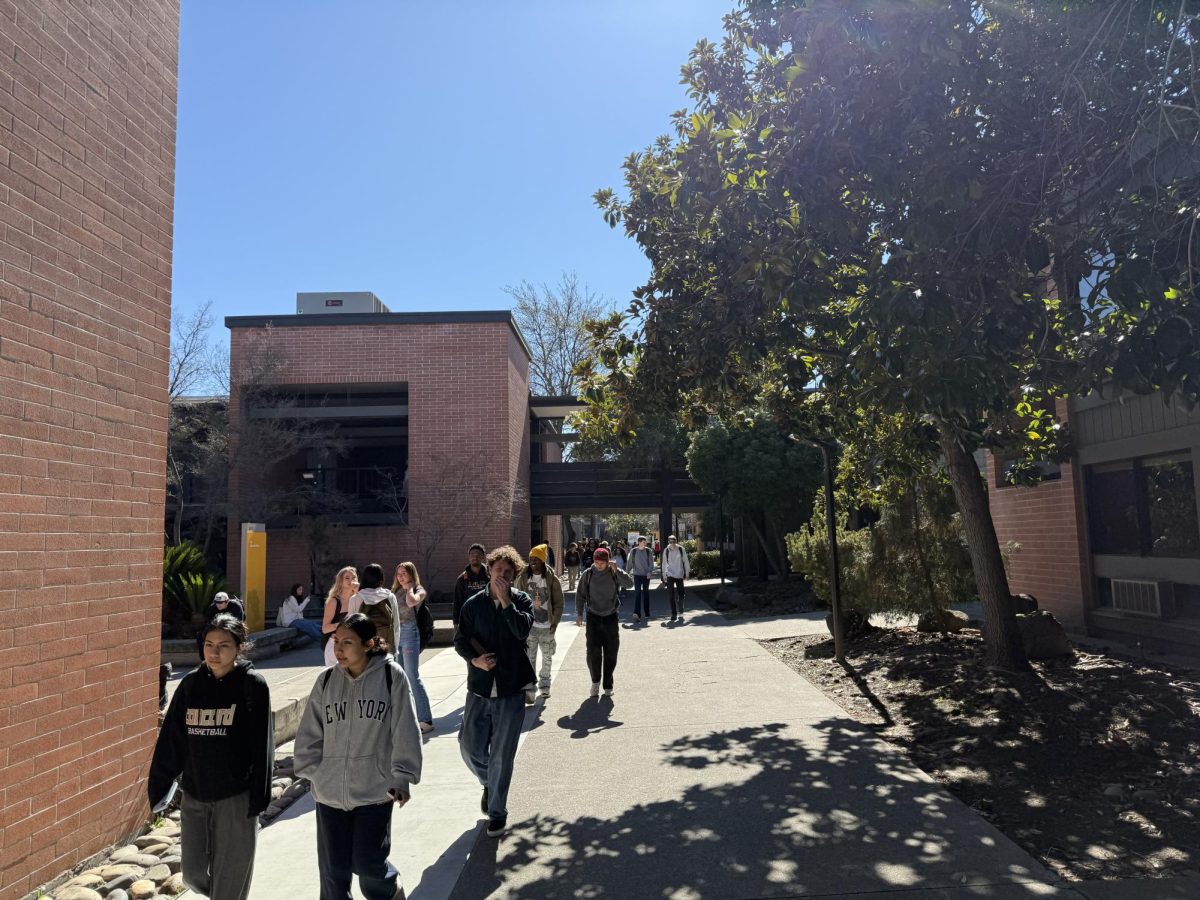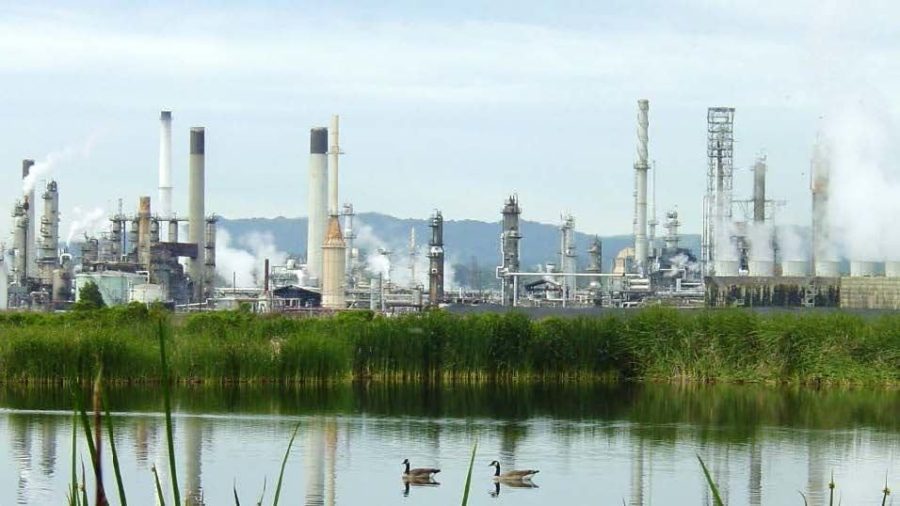Martinez Residents Voice Anger, Fear Over Refinery’s Toxic Spew
When the people of Martinez awoke to ash scattered on their cars and homes last November, they assumed it was from a nearby wildfire. Even after authorities revealed the dust had actually resulted from a toxic emission at the local refinery, life carried on. Children rolled on front lawns, parents planted gardens, winter turned to spring.
It took nearly five months of email updates and virtual town halls before residents filed into a Martinez City Council meeting last month to hear the most substantial report to date about the leak—and to share the confusion, fear and anger they’d been holding for so long.
“I know now that it was a mistake to move to a town that has a refinery,” said resident and avid gardener Elka Holmes during the public Q&A portion of the April 5 meeting. Holmes said she and her partner, Jeffrey, along with their small children live about five blocks from the refinery, and the accident still chokes her up.
“I cannot help but put my fingers in the dirt every day I pass by our garden,” she said, “even though I know what could possibly be in there. It makes me incredibly sad.”
On the night of Nov. 24, an uncontrollable pressure buildup in the Martinez Refining Company’s (MRC) smokestacks released 20 to 24 tons of heavy-metal-laden “spent catalyst,” releasing dust that covered Martinez. According to Contra Costa Health Services, initial tests of the fallout revealed high levels of metals like zinc, barium and chromium, the latter of which can be carcinogenic.
The refinery also broke the law by not reporting the incident immediately to regulators, which rendered the county’s all-hazard Community Warning System useless.
Now, both CCHS and the Bay Area Air Quality Management Department are investigating the cause of what CCHS deemed, three weeks after the incident, to be a “Major Chemical Accident.” At the request of CCHS, the county District Attorney’s office is now reviewing whether to bring charges against MRC for illicit discharge and failure to notify regulators and residents about it.
Over the course of the hours-long meeting last month, about 20 residents spoke. Some expressed outrage that they weren’t notified sooner about the toxic release.
“I have neighbors who don’t have social media,” said resident Rachel D., participating via Zoom. “They had no idea. I don’t even think they have internet.”
The city’s staff report said residents were sent a string of newsletter updates via email. Rachel D. said she wished that the city had sent mailers.
According to Holmes, “we were not told early enough, [and] not every house got a letter.”
A Root Cause Analysis report by MRC confirmed that the company wasn’t even aware of the toxic release until residents alerted them to the fallout that had blanketed the city. “There was (and currently is) no mechanism to alert MRC personnel to the potential that [a pressure build-up] event might result in a release of catalyst into the community,” the report stated.
Residents at the meeting demanded to know why officials hadn’t advised greater caution sooner. The day after the emissions release, MRC stated that the catalyst dust was “non-hazardous.” On Nov. 30, CCHS reported that the dust was not, in fact, harmless, but at the same time it posed “no immediate threat.”
It wasn’t until March 7, after residents had been harvesting and consuming home-grown fruits and vegetables for months, that CCHS advised people not to eat from their gardens until soil testing had been completed.
Councilman Jay Howard, who toured the refinery in late March, said he got the feeling that MRC representatives were “ducking behind” and making a “bad guy” out of CCHS to avoid blame. “They stated, repeatedly, that the county health department told them they could not communicate with our public,” said Howard at the April hearing.
The county’s director of hazardous materials, Nicole Heath, denied that any such statement had come from CCHS. “We would certainly not want to hinder them communicating anything out to the public,” Heath said.
Kenneth Axe, the process safety and assurance manager at MRC and a member of the county’s oversight committee, declined to comment in light of ongoing investigations. On his behalf, MRC’s government relations director, Brandon Matson, responded via email: “We continue to cooperate with all agencies and investigations related to the spent catalyst release.”
But residents of Martinez said that they had had enough half-truths and delays in explanation, and wanted accountability and assurances that such a disaster wouldn’t happen again.
“We’re all talking about plumes and soil testing,” said Heidi Taylor, another Martinez resident speaking via Zoom, “while they continue to operate without the equipment upgrades to make us safe.”
The upgrades in question include wet-scrubbers, which have been a point of contention since before the November accident. In 2021, the Bay Area Air Quality Management Department tightened limits on refinery emissions, and wet-scrubbers—devices that remove particulate matter like the dust that fell on Martinez—were indicated as the best option to meet the new standard.
However, that same year, KQED reported that Martinez Refining Company’s parent firm, PBF Energy, filed suit against the agency arguing that installing such devices would be prohibitively costly. The suit is still ongoing.
MRC’s Root Cause Analysis listed 11 corrective actions the company proposes to implement, from providing additional alarms to extra operator training. Wet-scrubbers were not mentioned in the analysis.
Dr. Sara Levin, a deputy health officer at CCHS, emphasized the role that “institutional factors,” as opposed to human error, played in the accident. “The lack of the wet scrubbing that could have prevented this is a major thing,” Levin said.
Some expressed doubt that a company like MRC could be trusted to self-report on its actions, despite the severe health consequences at stake. Greg Nudd, the deputy air pollution control officer for policy at BAAQMD, confirmed that the agency has real-time fenceline monitors located around the refinery—but that MRC’s in-house monitors are the most telling, and so far, the information they contain has remained out of public view.
“It would make sense for the air district to have real-time access to that data,” Nudd said.
Residents additionally voiced concerns about the health—and cost—of their potentially contaminated soil, for which they’re seeking compensation.
“I would like to see MRC provide soil testing for all the property owners now,” said a man who identified himself as TJ via Zoom. “I put in raised garden beds and I’ve hand-carried ten yards of potting soil into these beds at 100 bucks a yard. I’ve spent $1,000 on soil. How is this going to be reimbursed if we have to remove it?”
CCHS said it has hired an independent firm to conduct soil testing, with a full report expected by mid-May.
“I would think it would be good business for [MRC] to be good neighbors,” said Councilman Howard. “Were they caught off guard by this? I believe that. Did they handle it properly? I don’t think so.”










































































Tracy Woodard • May 3, 2023 at 8:26 pm
Informative article, however, I believe the photograph shows the Tesoro/ Golden Eagle refinery instead of the Martinez (previously Shell) Refinery?
Heidi Taylor • May 2, 2023 at 5:16 pm
Excellent reporting! Thank you Katia!
Amanda Rainey • Jun 3, 2023 at 10:52 pm
Wow im a martinez resident and just learning about it now. I also consumed from my garden about 1 mile aaway. Any way to get in on seeking compensation? This is appalling.
Heidi Taylor • May 2, 2023 at 5:14 pm
Excellent reporting! Thank Katia!